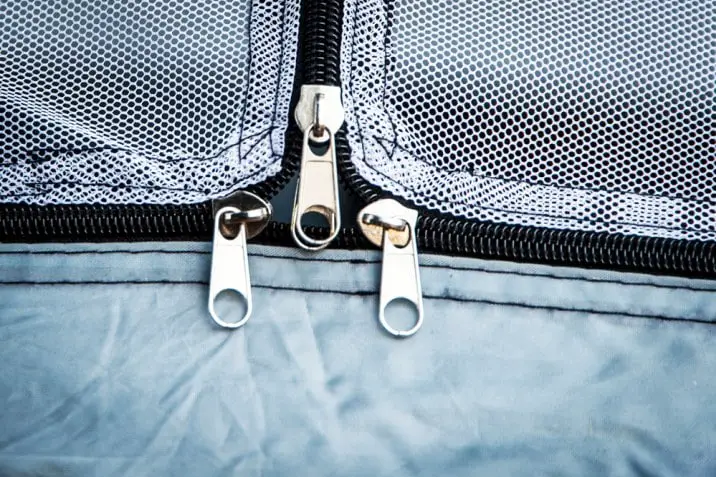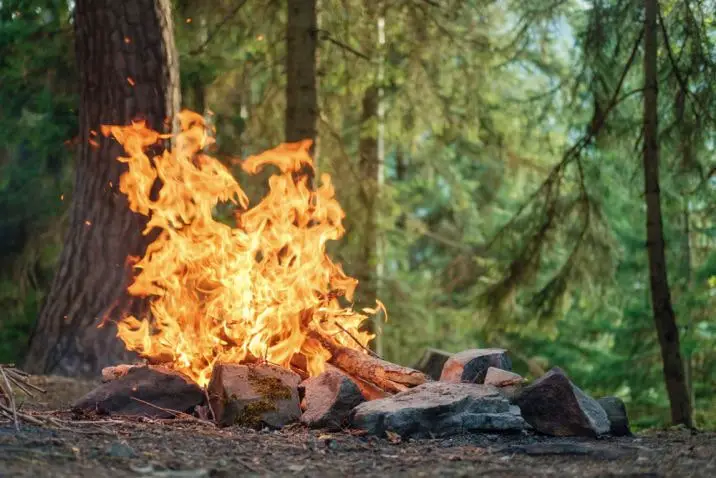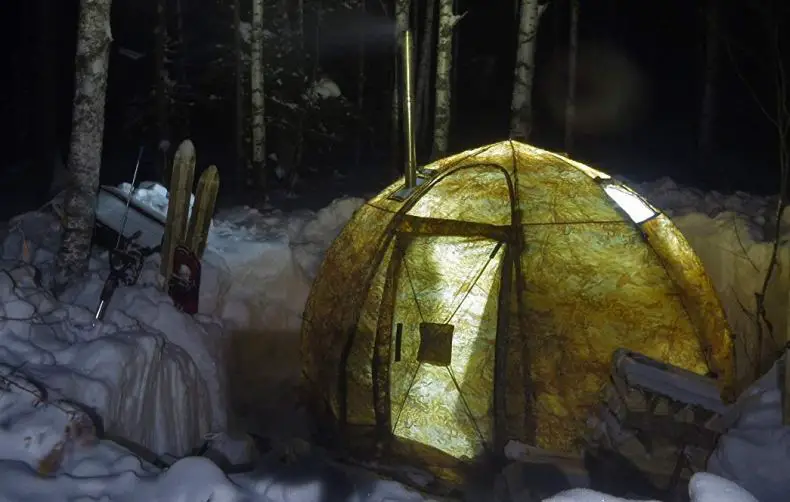One of the biggest issues campers will face as the colder months hit outdoors is how they’ll remain warm inside their tent. It’ll get pretty cold out, especially at night. Therefore, knowing how to insulate a tent for winter camping is incredibly important.
In fact, this could be potentially a life and death situation for some. Thus, you need to know how to stay warm inside the tent, at least enough to be comfortably warm and not freeze.
There are many ways this can be done, yet only a few are considered relatively easy to accomplish. The reason comes down to, ultimately, what you have available to you as well as the supplies you bring. Everything plays a role in insulation.
Even some small stuff can be really useful. Other things available, though potentially more complicated, can also be helpful. That said, let’s get started on the ways you can insulate your tent for winter camping!
Table of Contents
Zip Up All The Way

We cannot tell you how many times people have complained about being too cold at night, yet seemed allergic to the idea of zipping up their tent. You’d think that this was pretty obvious, but many leave openings out of habit.
When camping during the year, it can be quite warm in your tent. Especially if you’re sleeping with another person or a group in the same tent. We cannot get to the complicated material without first addressing the obvious.
Nothing we suggest will work if you do not do your best to make sure the heat does not escape, of course. We’re discussing insulation, true. This revolves around the tent and leaving openings allows for the tent to let cooler air in. Do you see a problem with that? We certainly do.
Sometimes Smaller Is Better
A lot of people like to go camping with multiple people. It is rare to see a person camp alone these days, but it does happen from time to time. Of course, if you’re going camping alone then you’re going to likely use a smaller tent.
However, if you’re going camping with one or two other people….do not go for the 4 to 6 person tent like you might in the Summer or Spring. You want to use a lighter, smaller tent in the winter periods. Sure, it might seem crowded in a smaller tent.
Yet this is a pretty good thing as it means more of your own body heat along with the heat your friend(s) will help. Heat will be trapped far more in a smaller tent as opposed to a larger one. Thus, forget about what your wife tells you. Sometimes, smaller is better!
Consider The Ground

When you camp, do you use a tent that does not have a bottom included? Do you have any sort of insulated padding for flooring in the tent? Some tents come with these types of things included while you have to buy separately with others.
It is okay to buy that stuff separately. If you cannot, there are options. Yet this same method can also work for those with regular flooring too. We recommend bringing something like large beach towels or blankets.
If you have fur or fake fur blankets, this might be the most helpful for flooring. Think about it for a second. Fur protects many animals from the elements…so why couldn’t it also help you as extra insulation for the ground area of your tent?
Of course, any blankets will help in this situation. The ground will be the place where most of your warmth disappears. By having something present to be between you and the ground can mean the difference between being cold and being warm.
Think About Where You Set Up Camp
Most people will try to find a spot that is properly level. While finding a properly level area can be good for camping purposes, this might not be the most important in this case. You want to find a spot that can protect you from things like wind.
Even the best tents can be affected by cold wind blowing up against them. This is why we’d recommend, if possible, finding something like a large rock to camp beside. The rock will act as a natural wind break and keep that one part of the elements out.
That can be a massive help, especially in those cold, windy nights. It’ll also be a perfect place to set up a fire, as the wind cannot blow it out there. Of course, you do not have to be a rocket scientist to know that fire = warmth.
If you do not have a large rock to use, you can do something else instead. If you’re in a snowy area, simply dig out a large hole that will have snow all around. You can use this snow to act as a wind break too. It’ll be best to stear clear of trees due to the potential for falling snow.
If this is not an option, you can also gather up som large sticks or smaller branches. Merely stick them into the ground like stakes. You can then weave in some leaves or other bendable sticks you might have available to you. This will not be as effective as other wind breaks, but it’ll certainly do the hob when you have no other options.
Heat Pack & Hot Rocks

You can carry heat packs with you from home too. They will usually work for a good bit, but it depends on the type you’re using. Some might only last a short period of time. Yet if you do not want to make this purchase or simply do not have the option, there are other things you can do.
You can start a fire and put rocks on it. Get the rocks off at least by the 7 to 10-minute mark. You will then place them close to you where the heat from the rocks will aid your warmth. They might not stay warm for a long period of time. It might just be for an hour or so.
Yet they can easily be put right back on the fire or others can be instead. This works best with smoother rocks over other versions. They seem to hold their heat longer and you don’t have to worry about chipping issues.
Your Attire
Come on, did you really think we’d leave out the most important thing? If it’s cold out, wear some dang clothing. Layers are incredibly important even as you try to sleep at night. That might mean you need to wear thermals under your clothing.
It could also mean you might need to wear a few shirts under your jacket. It’s truly all down to how cold it is outside and how it affects your body.
Your head and feet are often the places where heat escapes or places where your body gets cold quicker. Naturally, wearing warm socks and at least a toboggan/beanie will be needed to help heat these areas.
Ultimately, this might be the most important thing. Of course, packing things like blankets to cover yourself up with is important. But less so compared to your overall attire, in our opinion.







